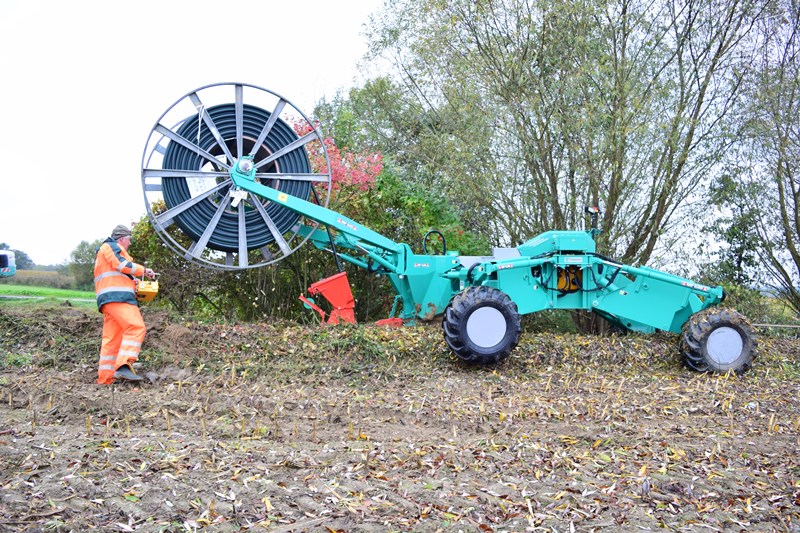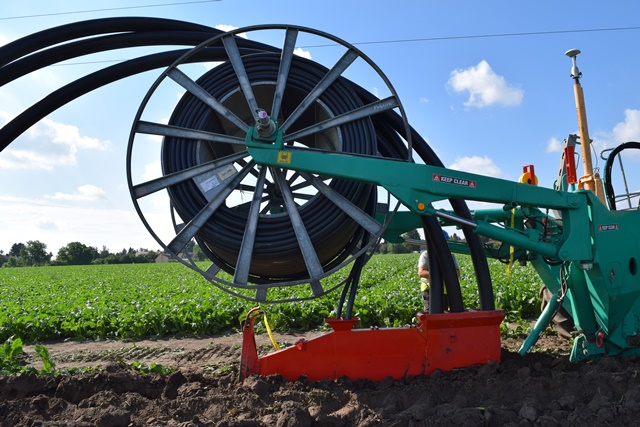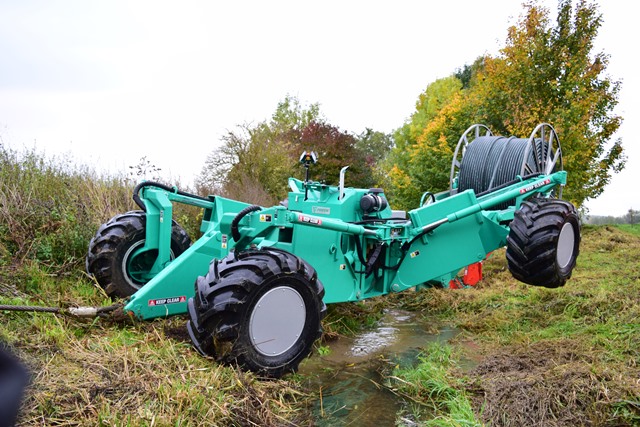Laying fibre optic cables
The development of high-speed broadband in Germany compares very poorly with other industrialised nations, especially in rural areas. In order to accelerate broadband expansion, all options for laying multipipes are being used. As a result, the pipes are not laid in a high-quality manner. In some places, the pipes are laid only 30 - 60 cm into the ground, which leads to future cable damage. In order to accelerate the broadband expansion and, above all, to lay the pipes in a high-quality manner, the company Walter Föckersperger offers the better solution.
The advantages of our machines:
The FSP6 plough from Föckersperger has been specially developed for broadband expansion. It combines technical innovation with optimised performance and inspires with its compact size and simultaneous performance.
The FSP6 is the smallest plough in our range and therefore perfect for laying multipipe / fibre optic lines.
With a compact weight of just 10 tonnes and a length of only 9.14 m, the FSP6 plough is mobile and manoeuvrable. What it lacks in weight and size, however, the FSP6 makes up for in performance. The specially developed winch has a pulling force of 50 tonnes in single pull and 100 tonnes in double pull. The FSP6 is particularly suitable for off-road use. It does not need a cab, which makes it easy to lay fibre optic cables in difficult terrain between bushes, under trees and subways (up to 2.91 m). The 4x4 hydrostatic wheel drive with hydraulic 4-wheel steering also guarantees you maximum manoeuvrability in confined spaces.
Verlegung von Glasfaserkabeln auf umweltfreundliche Weise
The FSP6 - just like all FOECK machines - causes very little damage to the ground. The hydraulically adjustable outriggers adapt to the ground and not vice versa. The track width can also be variably adjusted; thanks to a ploughable curve radius of just 3 metres, even the tightest turns are no problem.
With its well-tuned engine power, the FSP6 is economical and environmentally friendly. Its efficiency and working speed ensure significantly lower CO2 emissions compared to conventional construction sites. Methods such as milling or excavator laying not only consume much more diesel fuel, but also cause much more damage to the land. Laying with the compact plough from FOECK, on the other hand, is effortless and sustainable.
Cost savings through more output in less time
The FSP6 plough not only works deeper, but also works significantly faster than comparable systems. This means you can lay up to 1,500 m of fibre optic lines in one hour. Moreover, the easy handling and the practical radio remote control let you continue working without any problems even in otherwise confusing situations. The FSP6 is even more mobile thanks to the low-loader included in the scope of delivery. This means that you can do without additional logistics and the approaching of several construction sites on one day does not pose a logistical problem. The reliable and precise work with FOECK machines enables the reliable laying of fibre optic cables in the shortest possible time. This sporty, manoeuvrable plough can even be used at property boundaries.
In addition, the adjustable blade shoe enables the specified depth to be maintained throughout, even in changing soil conditions.
References: an excerpt of already successfully implemented fibre optic projects
![[Translate to Englisch:] Walter Föckersperger](/fileadmin/media/home/Walter-Foeckersperger.jpg)
We are pleased to advise you
Would you like to learn more about the FOECK laying system? Then we look forward to hearing from you by phone, e-mail or via our contact form. You are also welcome to arrange a consultation with us in which we present technical details of our products.
Walter Föckersperger, Managing Director
Phone: +49(0) 8742 43897-0
Mail: walter.foeckersperger@foeck.com
FAQ
How are fibre optic cables laid?
For broadband expansion, FOECK has designed a machine that is designed for the special requirements of laying fibre optic cables. The smallest plough in the FOECK range offers sufficient power for laying fibre optic cables, as it guarantees a laying depth of up to 1.20 metres. The fibre optic cable is then blown into an empty pipe or laid directly.
What needs to be considered when laying fibre optic cables?
Often, fibre optic cables are laid at a depth of 30-60 centimetres, but in practice this is not sufficient to protect the cables from potential damage. Such damage is caused, for example, by trench cleaning or tree planting work. Therefore, FOECK machines lay at a depth of up to 1.50 m in a process-safe manner.
At what depth are fibre optic cables laid?
In conventional civil engineering, cables are often only laid at depths of 30-60 cm. However, this is not sufficient to effectively protect the fibre optic cables from damage. The FSP 6 guarantees a laying depth of up to 150 cm. To protect the fibre optic cables, we recommend a laying depth of 120 cm. This installation depth reduces maintenance work and guarantees the longevity of the fibre optic cables.
How do the fibre optic cables get into the empty conduits or multipipes?
After laying the empty pipes or multipipes, the fibre optic cable is "blown" into these pipes. Here the FOECK system again shows a great advantage:
Due to the step laying slot and the accordion system, the laying is much straighter. Due to this fact, fibre optic cables can be blown in over longer distances.
What is the advantage of fibre optic cables?
The biggest advantage of fibre optic cables compared to copper cables is the particularly high transmission rate with a high reliability. In addition, fibre optic cables are less susceptible to interference than copper cables. Fibre optic networks also make do with passive energy and thus only consume around one fifth of the electricity of a comparable copper network.
![[Translate to Englisch:] Glasfaserleitungen verlegen](/fileadmin/media/Glasfaserleitungen-verlegen.jpg)


